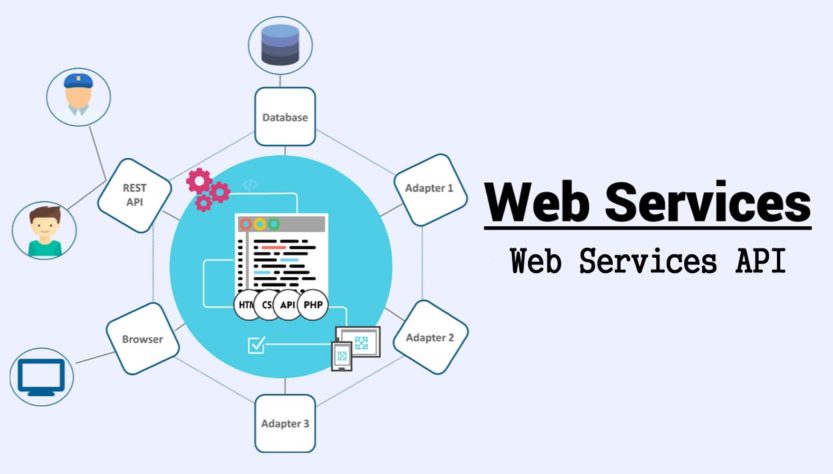Definition
Web services are two application/machine communication mechanisms regardless of the underlying architecture and technology. This independence encourages web service-based applications to be loosely coupled, component oriented, cross-technology implementations. Web services can be used alone or with other web services to perform complex aggregations or business transactions.
A Web service can be defined as follows:
- Client-server applications or application components for communication.
- A method of communication between two devices over a network.
- System software for machine-to-machine communication.
- A collection of standards or protocols for exchanging information between two devices or applications.
Types of Web Services
- SOAP Web Services
SOAP, which stands for Simple Object Access Protocol, is a protocol specification for the exchange of messages/structured information in the implementation of web services on computer networks. SOAP uses Extensible Markup Language (XML) as its message format, and typically relies on other application layer protocols, notably Hypertext Transfer Protocol (HTTP) and Simple Mail Transfer Protocol (SMTP), for message transmission and negotiation.
- REST
REpresentational State Transfer (REST) is a software architecture for distributed systems such as the web. REST has grown to become the dominant web service design model today. The term representational state transfer was introduced and defined in 2000 by Roy Fielding in his doctoral dissertation. He is one of the main authors of the HTTP specification versions 1.0 and 1.1. By constraint, REST is commonly referred to as “RESTful”.
Benefits of Web Services
Web service Fully based on web and xml standards. Web Services can help:
- The intermediary on the platform integration along the execution of the virtual machine.
- Integration between Web and OO middleware.
- Integration of isolated workflows and services (Web Services Flow Language – WSFL).
- Exchange data on different applications (X-Schema, XSLT++)
- (Future: standardization of context info between web services and clients – horizontal service integration).
- Major players and standards
Imagine the functions that we usually create in our program to do repetitive work and can be accessed from any part of our program. Likewise with web services. The difference is, if the functions in our program can only be accessed from within the program, then the web service can be accessed by other programs via the web. Web service technology allows an application to be very small in size, because most of the data is stored in the web service so it does not need to be stored locally. This web service also makes it easy to update data in the application because changes can only be made in the Web service and all applications that are installed locally and access this Web service will automatically follow these changes. This Web service technology is very suitable to be applied to mobile applications where most of the devices are always connected to the Internet and require lightweight applications in terms of local installation.
The need for digital IT is needed in daily activities, Bead IT Consultant is the right choice as your partner, visit our website by clicking this link: www.beadgroup.com

